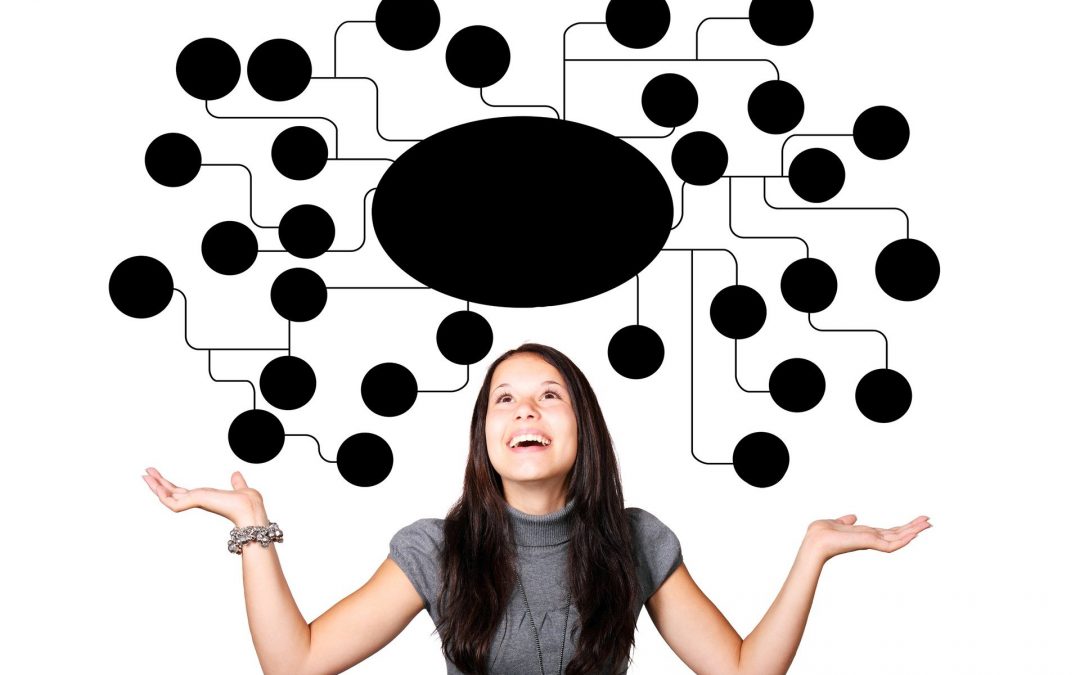What are mind maps?
Why are they effective for learning Spanish?
Using mind maps reproduces the way your brain organizes and stores information.
Our brains don’t look for words in lists when we want to use them. By this I mean that when you can’t remember how to say «toothbrush» in English, for example, your mind doesn’t look for that information in a list called «bathroom objects» in which there is a beginning and an end. Rather, the words you know are organized in your mind by themes, sounds, grammatical categories, syntactic and pragmatic functions etc.
Think of it as if your brain was a library and these groups of words were bookshelves. Words can be found on various shelves, sometimes because of how they sound and sometimes because of the meaning they have or the use to which they are put. When trying to remember a word, first, you access the information that you use most frequently, that is most connected to other concepts, and that has a high imagery (you will find it easier to remember how to say «house» than how to say «loneliness» precisely because the first term has a physical representation).
Using mind maps activates your brain’s lexical organisation systems, so you consciously create your own libraries. You facilitate connections between different words so that when you want to retrieve them for use, your mind will access them faster because it has a greater number of connections to that term.
This is the point of all this: because the brain works with associations, these elements help you remember. The brain works with radiant thinking, i.e. it projects our essence based on the neural functioning of the brain; it doesn’t work with linear thinking like when we write and take notes.
In addition to that, by creating mind maps, as well as exercising your analytical skills you are also working on your creativity.
How to build a mind map?
- Write the central theme of the mind map in the middle of a sheet of paper.
- The main themes related to the problem radiate from the central image in a branching way.
- If later on concepts or words come up that are linked to the themes of point 2, point them near that word and draw an arrow to that linked word. The ramifications form a nodal structure.
Tips for your mind maps:
- Use several colours
- Draw pictures to go with the words
- Connect parts of the mind map with arrows and colours.
- Be creative

